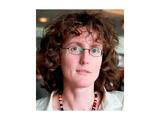![header=[] body=[<b>Location: </b>Leiden, Netherlands] cssheader=[boxoverTooltipHeader] cssbody=[boxoverTooltipBody] delay=[200] Nl](/images/famfamfam_flags/nl.png?1680607579) User: Jmboer
User: Jmboer
 |
Name: Jmboer Joined: Thursday 07 February 2008 15:20:04 (UTC) Last seen: Monday 28 September 2009 14:33:45 (UTC) Email (public): Not specified Website: http://www.lumc.nl/MicroarrayAnalysisGroup Location: Leiden, Netherlands |
Jmboer has been credited 0 times Jmboer has an average rating of: 0.0 / 5 (0 ratings in total) for their items |
Integrated statistical analysis to identify associations between DNA copy number and gene expression in human tumor microarray data<o:p></o:p>
Renée X. de Menezesa,b, Marten Boetzera, Melle Sieswerdaa, Judith M. Boera<o:p></o:p>
<o:p> </o:p>aCenter for Human and Clinical Genetics, Leiden University Medical Center, PO Box 9600, 2300 RC Leiden, The Netherlands, bPediatric Oncology Laboratory, <st1:place><st1:placename>Erasmus</st1:placename> <st1:placename>Medical</st1:placename> <st1:placetype>Center</st1:placetype></st1:place>, The Netherlands<o:p></o:p>
<o:p> </o:p>
Genes that play an important role in tumorigenesis are expected to show correlation between DNA copy number and RNA expression. We propose a high-throughput model that allows simultaneous analysis of these two types of microarray data, aiming at the discovery of candidate genes involved in the causation or maintenance of the tumor phenotype.<o:p></o:p>
<o:p></o:p>Taking into account that gains and losses usually extend over larger chromosomal regions affecting the expression levels of multiple resident genes, we used gene sets rather than individual genes to generate a robust and sensitive model. Simulated datasets, based on data-derived parameters, indicated that expression changes associated with a single copy gain were detected with 60% power when 50% of 100 samples were affected. For higher-amplitude gains or for losses, 80% power was reached with sample size 50 and 10% affected samples. We re-analyzed a public breast cancer dataset and compared the results of our regional model to a regression model of single-genes’ copy number and expression, to Pearson correlations, and to differences in expression between discretized copy number groups. Our comparison shows a clear advantage to using non-discretized copy number data and sets of genes’ expressions. In addition, our model allows for using additional explanatory variables and does not require mapping between copy number and expression probes.<o:p></o:p>
<o:p></o:p>In conclusion, we developed a general and flexible tool for integration of multiple microarray data sets, and showed how the identification of genes whose expression is affected by copy number aberrations provides a powerful approach to prioritize putative targets for functional validation. A Bioconductor package SIM implementing this approach is in its final stages of preparation.<o:p></o:p>
Other contact details:
Not specifiedInterests:
Development of new methods to analyze microarray data, including combined data analysis of expression and copy number data. Possibly the R package we made can be made available in Taverna.
Field/Industry: academic research
Occupation/Role(s): assistant professor
Organisation(s):
Center for Human and Clinical Genetics, Leiden University Medical Center
Netherlands Bioinformatics Centre
Centre for Medical Systems Biology

